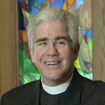“Preaching in the assembly is integrated with the whole event of worship”
[Augsburg Fortress, 2002], Principle P-4). More than one Christian tradition’s prescription, this declaration is a biblical description. Throughout Scripture and church history, the sermon was an accepted, traditional, and prescribed part of the service, even though it was not mandatory. In the synagogue, the rabbis and elders both read and interpreted the Scriptures; Jesus preached his first sermon in the synagogue in his hometown of Nazareth (Luke 4). Sermons in the Gospels and Acts frequently occur in the synagogue during worship. Describing Christian worship in the second century, Justin reports that “the memories of the apostles or the writings of the prophets are read . . . When the reader has finished, the presider in a discourse exhorts and invites us to the imitation of these noble things” (Justin Martyr, First Apology, LXVII [c. 155]). The sixteenth century reformation sought to restore the centrality and vitality of preaching in worship.
More important, God’s people seem to innately know that, at its best, the biblical sermon is an integral part of the worship service, rather than either an intermission from the liturgy or the main event for which everything else that happens in worship is either warm-up or encore. Both regular worshipers and visitors notice when the sermon and the other parts of the worship service “fit” together. They appreciate services in which the readings, hymns, prayers, sermon, choir anthem and sacraments connect, complement, echo or reinforce each other. Worshipers experience this cohesiveness as particularly powerful when they perceive that the theme or direction of the service, including the sermon, grows out of the Scriptures read and heard in worship, rather than something artificial or imposed.
Special care should be taken to coordinate all the elements of worship to insure that they support and reinforce each other. More than consulting the list of suggested sermon hymns in published worship resources, the pastor and church musician might study the Scripture readings together as part of their preparation. The preacher might also meet with the person responsible for crafting the prayers to discuss the images in the readings, the needs of the congregation, and the direction of the sermon. Together, those who are responsible for planning and leading worship can consider how the worship service empowers the congregation to receive and respond to the sermon, and how the sermon might contribute to making the worship service a unique celebration of God’s people.
Preachers are mindful of ways the church year, lectionary and style of worship influence how Scripture is interpreted and the gospel is preached. For example, John’s account of Jesus before Pilate (18:33-37) sounds and preaches differently on Good Friday and Christ the King. Preachers are also mindful that, for many listeners, the context of a passage of Scripture is provided by the readings that accompany it and the worship of the church, rather than a book of the Bible. Ask many people what comes before and after Luke 2:1-20, and they will tell you, “For to us a child is born” (Isaiah 9:6) and “Silent Night.” Preachers also know that the style of worship influences how sermons are crafted and delivered; an informal service calls for an informal sermon.
Understanding the sermon as part of the worship service invites us to reflect on what we communicate when we adorn the sermon with its own liturgical elements. Particularly when the preacher is also the presiding minister, giving the sermon its own greeting or invocation, prayer and benediction may suggest that the sermon is an end unto itself, rather than an integral part of the worship service. Preachers might reflect on why they add these elements to their sermons.
Finally, understanding that preaching is part of the worship service means that the first thing the sermon empowers the people to do is to sing the sermon hymn, say the creed, offer their prayers, and come to the Lord’s table. In other words, the sermon ought not skip over the rest of the service by moving people immediately to the church door to live as God’s people in the world. Working together, sermon and worship service, Word and Sacrament, do more than prepare God’s people to do mission. They are themselves God’s people’s first act of mission, a witness to Christ that begins in worship and continues in the world.

